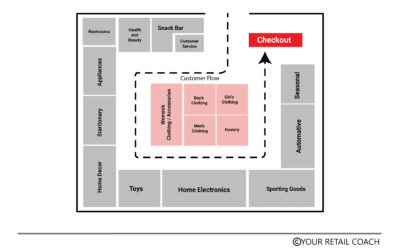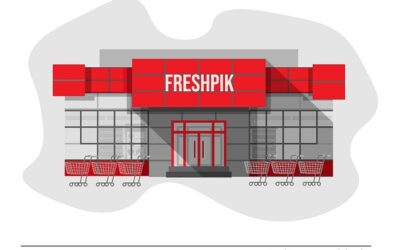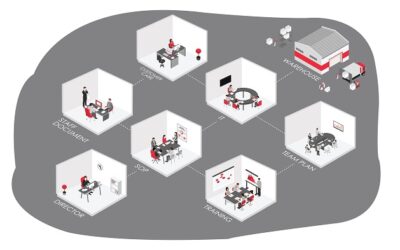Airport Retail
What is Airport Retailing?
Airport retailing simply refers to the retail sale of goods and services at airport premises. The known and unknown branded retail stores in airports are all in the business of what is called airport retailing. The word ‘airport’ is prefixed because of the location where this business takes place.
Types of retail stores and services commonly found at airports:
- Books, magazines and stationery stores
- Tea and coffee kiosks
- Food outlets
- Refreshment & Beverage stores (including liquor and tobacco)
- Perfume, jewellery, and luxury stores
- Stores dealing in eyewear, clothing and accessories
- Travel accessory stores
- Car rental outlets
- Booking counters of hotels
- Certified foreign exchange services
- Pharmacies
- Appointment counters of hospitals
Airport Retail as an industry
The airport retail industry is a part of what is called the travel retail industry which is valued at about USD 60 billion (2023) and projected to cross USD 170 billion by 2030. As per rough estimates from multiple perspectives, the share of the airport retail sector is estimated to be almost half of the total value of the travel retail industry.
Some of the driving forces behind the surge of airport retailing are:
- An increasing number of commercial passenger airports
- An increasing number of passengers travelling by air
- Growing appetite for travel and tourism among common people
- Improving airport infrastructure
- Growing behavioural acceptance towards retail shopping at airports
- Reinforcing effect
Airport Retailing as a Business Opportunity
When airport retailing is to be assessed as a business opportunity, case-by-case assessment becomes necessary. A big retail giant can think of a wider business model with a presence in multiple airports within a country or across the world. A smaller enterprise will have to think differently. The size and scale of the airport in question and the air traffic involved are also determining factors in developing a business model and business plan. Some of the important considerations to be taken into account to assess the prospect of starting an airport retail business are highlighted below.
Presence of Competitors
The presence of direct competitors is a strong positive sign of the presence of business potential in a given airport. The presence of multiple competitors indicates that they must have done their market research before establishing a business in that airport. It also shows the presence of a regulatory framework to apply for and start a specific business in that airport. Likewise, their presence sheds a green light on many important factors. However, the presence of competitors must not be construed as avoidance of market research and other essential assessments and projections for business.
Volume of Air Traffic
Just like it is unlikely to be commercially feasible to start a big business in a very small market, it is also the same with starting an airport retail business. The number of flights that an airport handles speaks about the number of prospective customers available for targeting. That is why airport retailing is a rare phenomenon in small airports. An entrepreneur thinking of starting an airport retail business must consider this as a primary factor. They need to see if the airport they are considering can justify the required business volume. As an alternative strategy, they may have to scale down their offerings provided the rentals and other costs support the business commercials.
Average Number of Passengers per Day
Even if an airport is named an international airport or is an important connecting point, the number of passengers may not be sufficient enough to pull off business commercials. An important statistic to look at is the average number of passengers an airport handles per day. Still, this number only shows the total number of prospects available for targeting. Now, what numbers are suitable or the degree of confidence in attracting customers and creating conversions shall vary from business to business. This data point is also relevant for existing businesses in making inventory-related decisions.
Airport Maintenance, Infrastructure and Ambience
Retail brands also have certain predefined standards to maintain. The physical elements of their stores reflect their brand identity and voice. Take cleanliness for example. A branded coffee shop would not open a branch in a locality where cleanliness and hygiene are not properly maintained by authorities. The same applies to airports. If the shop is clean inside but the other interior areas of an airport are not well-maintained by housekeeping, it will affect the brand experience of the customers. The same goes for the infrastructure and ambience in airports.
Routine Average Waiting Time
The time available with passengers is another vital consideration for airport retailers. In busy airports, under ideal circumstances, passengers do not have much time on their hands for leisurely or exploratory shopping. If they need anything they will get to the nearest store and buy it. Or if they notice a store and they get reminded of something, they will go and buy it from there. So, retail brands that are dealing with products that need deep thinking and consideration before buying should reconsider their airport retailing ideas. Airport retailing is for quick and easy purchases or consumption.
Presence of the Target Segment or the Need
A pertinent question that all businesses ask in general should also be asked in airport retailing – is the target segment available? The target segment comprises prospective customers who may buy the product offerings. If the target segment is not available, who will be offered and who will buy? And the reverse is not just true but would also perform well. Take the example of a store selling memory cards used in cameras and phones in airports in and around tourist destinations.
Premium Price
One side of airport retailing is about premium brands, premium and rare products, premium quality and premium pricing. It does not matter whether a store is selling chewing gum or imported wine. But sometimes even routine products are sold at exorbitant rates in the airports because of additional charges and high rentals. This makes airport retailing a tricky area of business for routine merchandise.
Rentals
Most of the airports in the world today are managed by private companies under the aegis of respective authority bodies. These companies make heavy investments and have to incur high operating costs to maintain the airports. They are bound by contracts for their deliverables. Because of all these factors, there is no scope for leniency in the quality of services or maintenance of assets and infrastructure. This burden passes on retailers and one s
Rules & Regulations
Airports are sensitive places governed by strict regulations. So, retailers must exercise high levels of caution and care in ensuring that they strictly abide by the established rules and regulations encompassing all business activities and operations.
Challenges in Airport Retailing
Making accurate demand forecasts
Airport retail stores encounter many challenges in achieving accuracy in demand forecasting. The foremost one is the transient and dynamic nature of demand in airport shopping. There is hardly anything consistent about it and is constantly changing. The fluctuations and unpredictability in demand make it challenging to generate a baseline projection. The buyer’s behaviour is also influenced by the purpose of travel, time of the year, airfares, frequency of travel, etc. For example, if the airfares are already high, passengers are extra cautious about spending on anything that could be avoided.
Limited customer base & drawing customers
The number of passengers travelling via an airport remains confined for long periods. This means retailers have a limited customer base. All the passengers may not be even the same as the target segment. Thus, it makes airport retailing a limited affair. Secondly, attracting customers is difficult in small and medium-sized airports. Customers are aware that goods are available at expensive rates in airports and prudence says it is better to avoid making planned purchases there.
Increasing rentals which are already high
Like the rentals for any property, the rentals for space in airports are also subject to annual or periodical hikes. There is little scope for businesses to expand within the hired space. This only increases their commercial burden with every passing year. And if the same does not get compensated with an increase in revenue, it begins to show up negatively on their financial statements. The same consideration applies to other operating costs as well.
Longer replenishment time
The inventory sold in the retail stores of airports have to go through stringent security checks and screens. This makes stock replenishment a time-consuming operation. Also, purchases have to be initiated much earlier to ensure that goods could be on the shelves on time. This also makes changes in merchandising or product offering a detailed planning process.
Remain open for longer hours
Because airports work 24×7, most of the retail stores in the airports remain open all the time. Some stores may close during the night but in busy airports, the majority of stores remain open for the full stretch. This means shift working is involved and it is stressful and exhausting for both small teams and business owners.
Longer onboarding of employees
Working inside an airport is again subject to stringent norms. Employers, apart from their own checks and measures, also have to adhere to the norms laid down by concerned airport authorities and other regulatory bodies governing hiring. So, recruiting and onboarding take longer for employees intended for posting in airport-based enterprises.
Limited room for stocking
With limited storage space, retailers have little room to flex their merchandising skills. To add to the woes, some stores do not even have additional room for storage like stock rooms. This makes things much more challenging for small retailers. And limited stocking abilities of a retail store affect the choices it can offer to its customers.
Difficult in returns and refunds
After passengers leave an airport, the process of return and refund becomes a daunting task for retailers. That is why most retailers display the sign – no return, no refund. But that is convenient only till a direct competitor does not display such a board. Again, different airports may have different rules and regulations governing product returns.
Why YRC
Started in 2012, YRC is a boutique retail and eCommerce consultancy brand specialising in business management, growth, and expansion. YRC’s growing global footprint is preceded by its experience of having worked with 500+ clients in more than 25 verticals. The services and solutions are designed and delivered by a team of expert retail consultants with rich and relevant professional exposure guided by planned and proven principles and processes.
In airport retailing, businesses of all sizes can benefit from YRC’s extensive array of services as per relevance and unique business requirements.
In business model development, YRC helps its clients identify and develop strong value propositions. The entire value chain is mapped encompassing the best way to create and make the identified value available to the target segment.
In financial and commercial planning, YRC prepares the detailed numbers and statistics required to convincingly pull off the business idea. The various assessments prepared include demand forecasts, projected sales and revenue, CAPEX and OPEX, estimated profit and loss statements, ROI and break-even analysis, and inventory and purchase planning.
One of the major concerns for airport retailers is making the best use of the available space while still achieving the goals of visual appeal and elevating the customer shopping experience. YRC’s expertise in layout planning is put to use here to help its clients quickly get a list of implementable options for the layout of their stores.
The benefits of SOP-based operations planning are many. But a strong reason to develop and use SOPs by retail stores located in airports is to ensure that the applicable rules and regulations established by airport authorities and other regulatory bodies are duly followed. SOP development & implementation assistance is one of our flagship competencies.
To know more about YRC’s retail consulting services or if you want any business-related query on airport retailing addressed by one of our expert retail consultants, drop us a message and we will reach out to you.
Let’s Talk!
Related Blogs
Retail Store Layout Strategy: What to Consider and How to Plan
Why Store Layout Matters in Retail The layout of a retail store carries several internal and external business implications. Layout is an important physical aspect of branding efforts. It creates an opportunity to create the desired atmosphere in stores thereby...
Reliance Gourmet Supermarket – “Freshpik” Case Study
The fifth-largest and preferred retail destination globally, the Indian retail industry is one of the fastest-growing segments in the world. India is experiencing unprecedented growth with retail development taking place not just in major cities and metros, but also...
How to Organize & Grow Supermarket / Hypermarket
Already running a supermarket store and wondering how to scale it further? Are you contemplating what should be your next steps to accomplish your vision to organize and manage multiple stores? If this is what you are looking for, then you are in the right place. Your...





We work only for Visionaries.